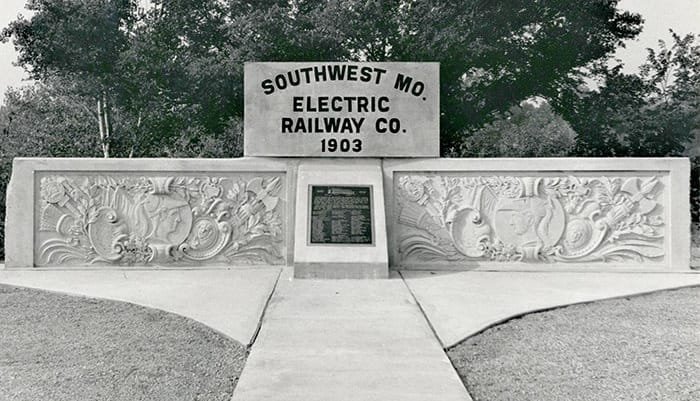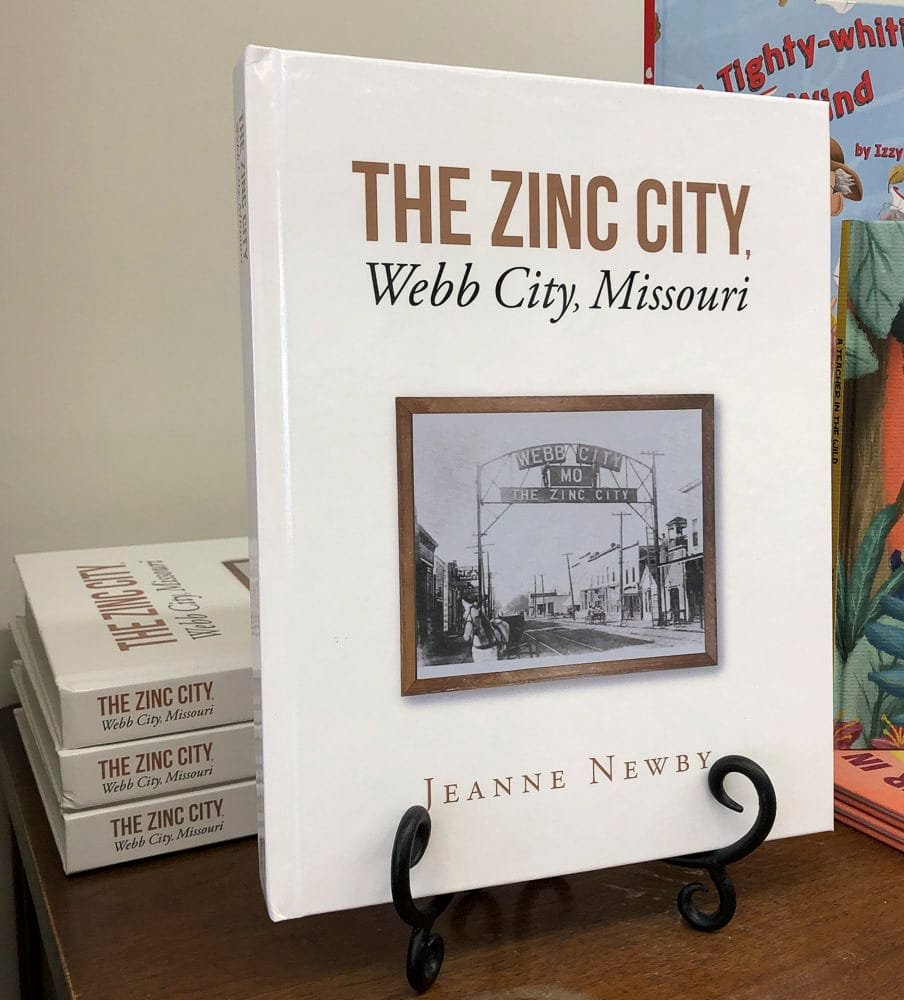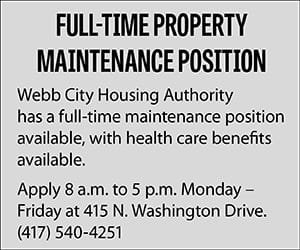
A memorial to the Southwest Memorial Electric Railway Co. is located near the depot in King Jack Park.

This 1901 description of the Southwest Missouri Electric Railway was found in the Encyclopedia of the History of Missouri
This line of railway connects the principal cities in the Missouri-Kansas mineral region with its terminal at Carthage, Missouri, and Galena, Kansas, passing through the cities of Carterville, Webb City, and Joplin, with a branch from Carterville to Prosperity. It also affords local service in Carthage and Joplin. Jan. 1, 1900, the total number of miles operated was 35. This was increased May 1, 1900, by an extension from Galena southwest to Riceville, a distance of three miles and by second tracks for a distance of 10 miles at intervals between Carthage and Galena, increasing the trackage to a total of 48 miles. The rolling stock comprises 10 single-truck cars, 20 double-truck closed cars, 11 double-truck open cars and three trail cars. The cars are provided with electric and hot water heaters, and the interurban cars have powerful electric headlights. Eight of the cars, put on the road in 1899, are 44 feet long, contain smoking compartment, and are modern in every detail. Double cedar poles and span-wire construction is used throughout, and the feed wire amount to nearly 300,000 pounds of copper. There are two power houses; one at Webb City and one at Lakeside Park, on Center Creek, which is a combination station and carhouse. Besides the Lakeside Park carhouse, there is one in Webb City and another in East Joplin
Two parks are owned by the company, Midway Park, near Joplin, and Lakeside Park, seven and one-half miles from Carthage.
The splendid South West Missouri Electric Railway is an evolution from a muleroad, which was built in 1890 by A.H. Rogers, now president of the present operating company. It was known as the Twin Cities Street Railway and extended from the west end of Webb City to the east end of Carterville, two and one-half miles. It was operated with mules from Sept. 1, 1890, until March 1, 1893, when it was purchased by the present company, and was extended six miles to Joplin and two miles to Prosperity. In 1890-1891, an electric railway was built from East Joplin to Blendville, a distance of five miles. The present company purchased this road in 1895 and the following year extended it from Blendville to Galena, a distance of seven miles. In 1895 the Jasper County Electric Railway was built with Carthage capital, and extended from Carthage to Carterville, a distance of 12 miles. This property was purchased in 1896 by the South West Missouri Electric Railway Company, and this acquisition brought the system to its present comprehensive dimensions.
The Streetcars brought magic to the area. There was a special feeling just riding the rails all over the area while sitting inside the streetcar. The excitement for a young child as they travel from Lakeside; downtown Webb City; busy streets of Joplin; past the mines where their daddy worked; or just out in the country between the small towns that they wouldn’t normally get to travel was enlightening. Women used the streetcar to do their shopping and visiting. Men had a way to get to work. Students used the streetcar to get to school, library, etc. Sports teams traveled from city to city for competitions.
The early streetcars had seats that ran the length of the car. Later streetcars had the coach seats. Early seats faced the front of the streetcar and as the streetcar arrived at the end of the line, the engineer would move to the rear of the streetcar as passengers stood to move the back of their seat forward to change seating directions. The streetcar could head back down the line with the conductor facing the front again as well as the passengers. The early streetcars were heated with pot-bellied, coal stoves and the newer cars were heated with electricity, which seemed cleaner and safer.
The streetcar did not have the convenience of a restroom or drinking fountain. There were no snacks to be purchased unless you purchased them at one of the depots which were located quite a distance apart. The color scheme of the streetcars associated with the Southwest Missouri Railroad Association was pea green with a yellow number and yellow trim. Certain numbers attained some recognition such as No. 91 was the first streetcar built by the Webb City crew and No. 32 being the first car to run the Webb City Northern route.
The old wooden streetcars of the early 1900s became the work cars for the maintenance men, eventually being switched out to the steel cars. Maintenance workers were of importance for the association as the entire scheduling system could be out of line with one streetcar down.
The charm of seeing a streetcar traveling over the streets in some of the old pictures of main streets in area towns is nostalgic. The opportunity to see old Car No. 60 pulling out of the car barn at King Jack Park adds its own charm to the city. The smiles on the faces of the young children as they ride Old No. 60 is contagious to all who watch the blending of new generations with memories of the old generations.
Each time the streetcar journeys out of the car barn we say a silent thank you to the wonderful men who donated their time and energy rebuilding a wonderful piece of history that makes Webb City so unique.

Jeanne’s new book, “The Zinc City, Webb City, Missouri” is now available at Webb City Chamber office and other local retailers, such as Maggie Jane’s Gifts, at 8 S. Main St.

